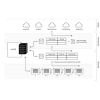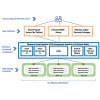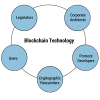Business Transformation Requires Transformational Leaders
Leadership and teaming skills are front and center in times of rapid change. Meet today’s constant disruption head on with expert guidance in leadership, business strategy, transformation, and innovation. Whether the disruption du jour is a digitally-driven upending of traditional business models, the pandemic-driven end to business as usual, or the change-driven challenge of staffing that meets your transformation plans — you’ll be prepared with cutting edge techniques and expert knowledge that enable strategic leadership.
Subscribe to Arthur D. Little's Culture & Leadership Newsletter
Insight
Does culture drive success, or is culture emerging from the implementation of carefully considered strategy, structure, and processes inside the organization? Our view is the latter, and the good news is that culture is something that executives can affect.
This Advisor describes three areas of customer experience that are affected by digital transformation: customer understanding, top-line growth, and customer touchpoints.
We hope the articles in this issue provide you with new perspectives on blockchain’s potential as a game-changing technology now and in the future.
2018 is a defining year for the commercial adoption of blockchain. Initiatives in various industries have reached a maturity threshold, marked by a transition of focus from experimental proof of concept projects toward production use.
What's the Big Picture in AI?
With all the focus on “exciting” AI applications, it’s sometimes hard to get a broader overview of how the market is actually developing.
Blockchain protocols have the potential to facilitate a fundamental shift in the Internet business model from its current status, where the user is the product, to a future model, where the user is the customer and the user’s data always remains in the user’s control.
Should You Use Smart Contracts?
One of the major use cases for blockchain is smart contracts. Does it make sense for your organization to use smart contracts? In this article, we describe smart contracts, including a discussion of how they work and the possible benefits of using them. We also examine the downsides of their use and offer further considerations for the reader.
As businesses adopt blockchain technologies, the ecosphere is going to need a specified intermediary agent whose core function is to manage disparate motives, ideologies, and inclinations. If left unaddressed, tensions may morph into enacted tribalism, and a major disjunct will appear between stakeholder groups — potentially stopping the so-called revolution in its tracks.
















